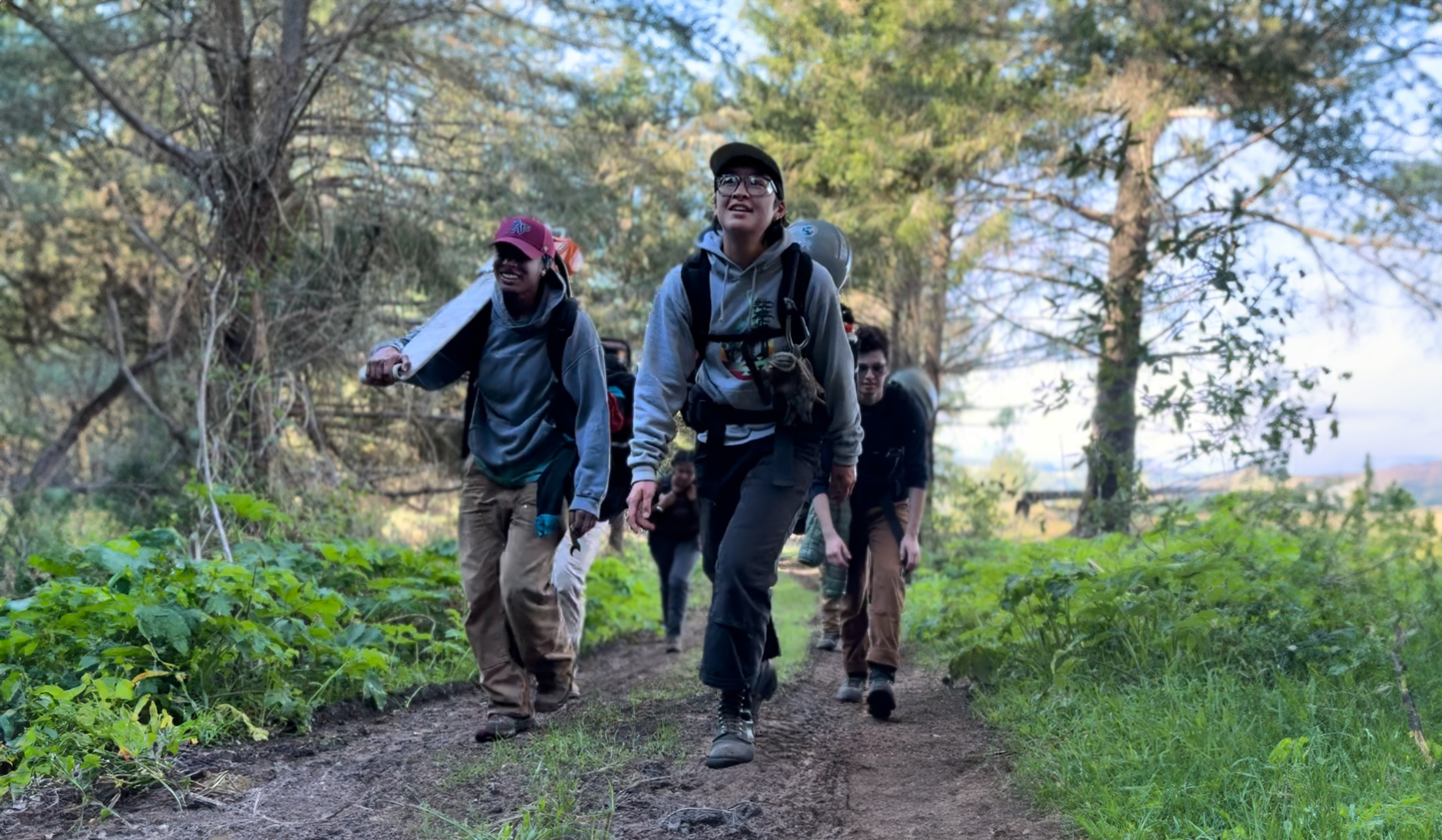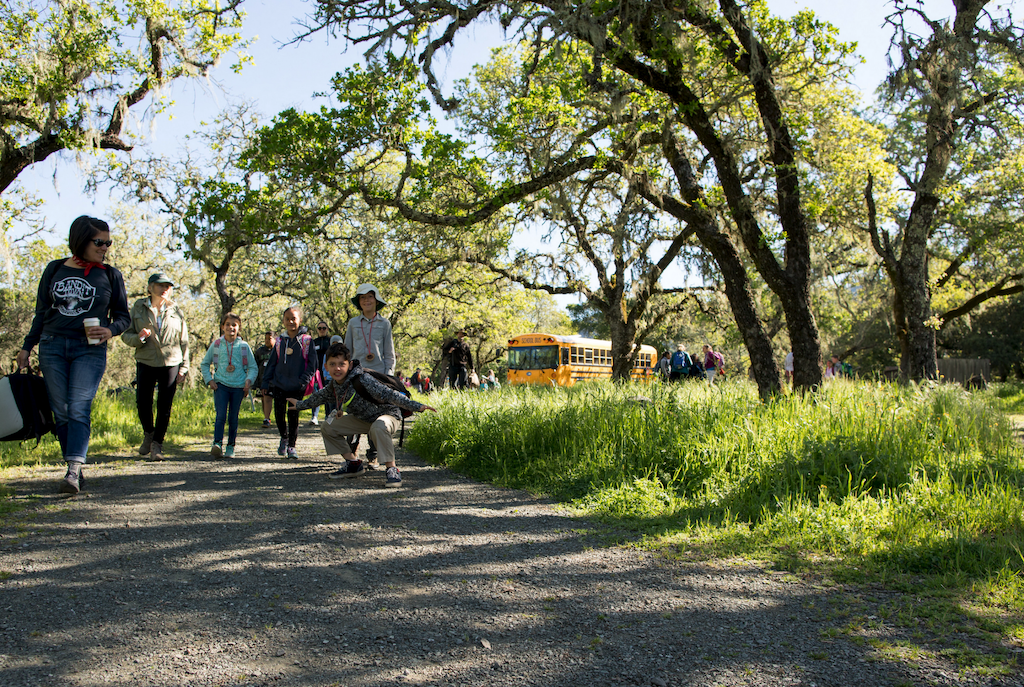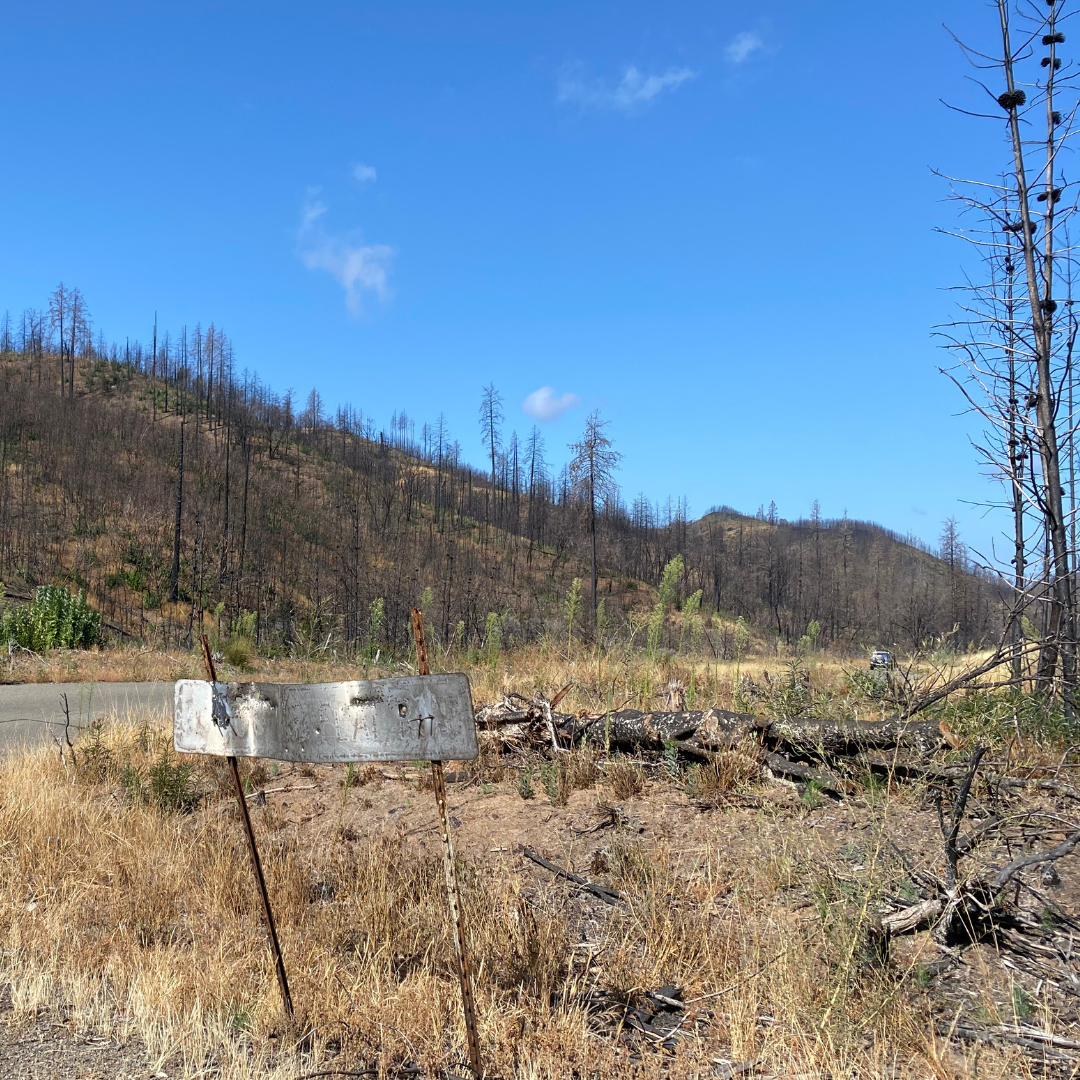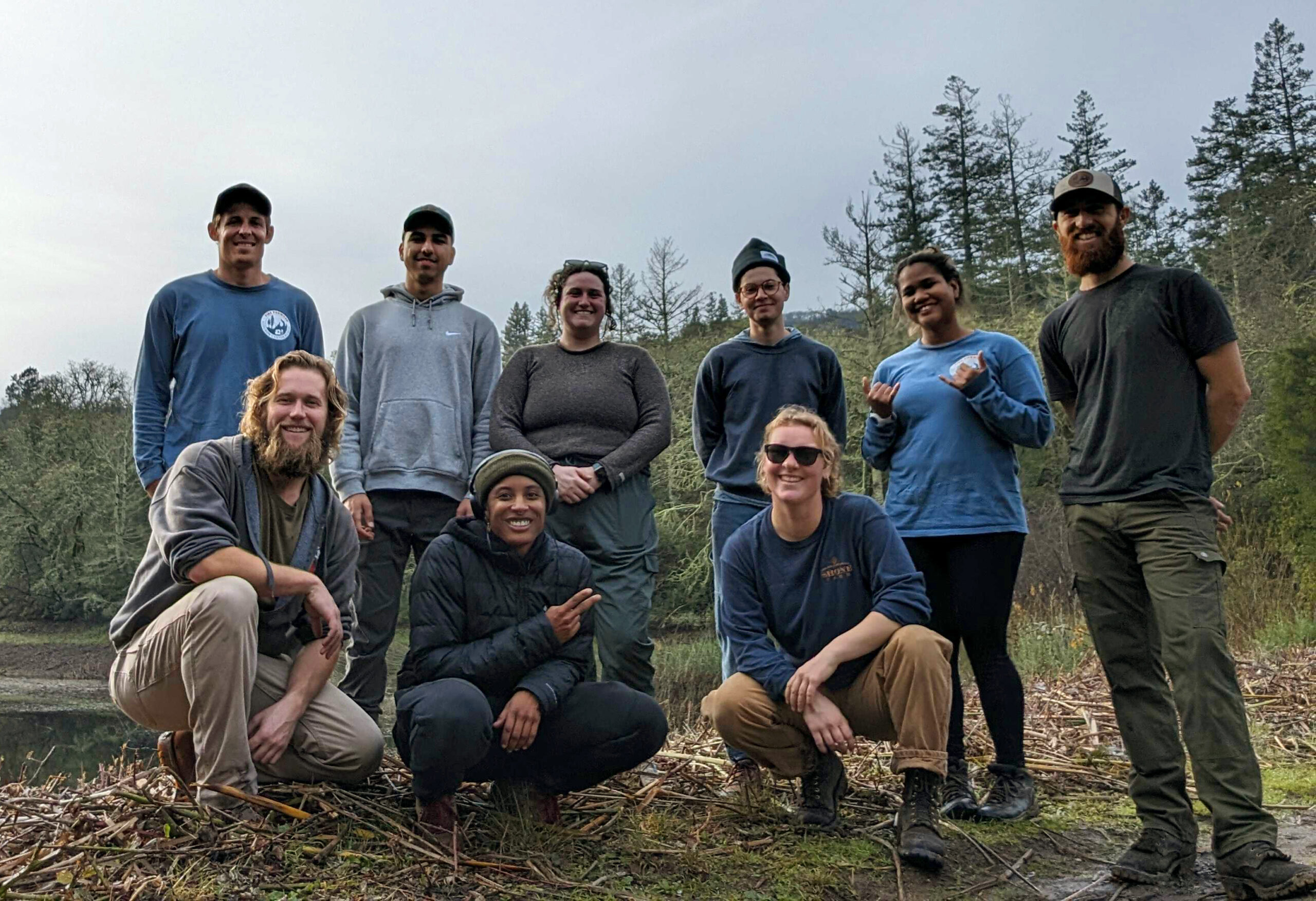|
Getting your Trinity Audio player ready...
|
Pent up demand for workforce
In 2021, Governor Gavin Newsom called for a state-wide increase in prescribed fire in California’s Wildfire & Forest Resilience Action Plan. Although desire runs high, there remained a deficit in staffing or paid training opportunities, leaving behind larger and more complex projects that could offer significant benefits. As a result, a backlog of projects piled up that needed prep, burn plans, and site visits, with not enough time or hands to do important monitoring and patrol work.
Partners across the state and nation expressed eager interest in having access to an Audubon Canyon Ranch prescribed fire crew to support their project work. Among them, Save the Redwoods League, The Nature Conservancy, California State Parks, Sonoma Ag + Open Space District, and Sonoma County Regional Parks requested help with a growing backlog of burn plans and site preparation.
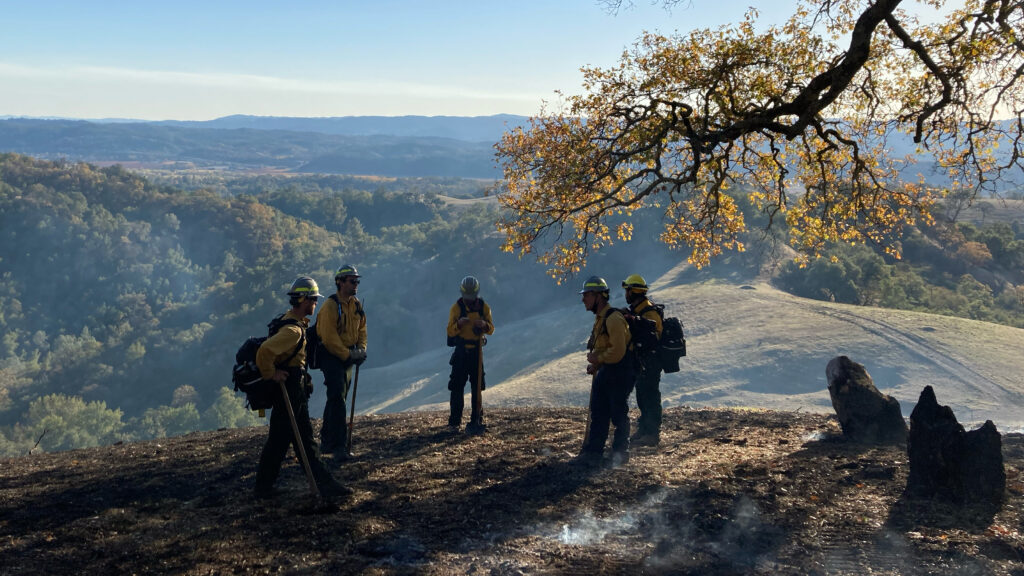
An urgent need for local jobs in prescribed fire
“What’s slowed this work is the lack of people. Filling leadership roles has been challenging when we don’t have enough paid staff, and skilled volunteers are already working one or multiple other jobs” explains Paul Sokoloski, who had been serving as crew lead. “We want to get more fire on the ground – there’s so much land that needs good fire. The capacity we need is not just on lands we steward; it’s a need across the region to create landscape-scale change,” he continues.
CAL FIRE and others were looking to support building capacity. “There is a need for more highly-trained, professional prescribed fire practitioners as California increases focus towards prescribed and cultural fire as a tool to mitigate the negative impacts of wildfires,” explains Justin Britton, chief of operations of CAL FIRE’s Wood Products and Bioenergy division.

Vision and funding unlocks a new era for prescribed fire
Leveraging a $2 million CAL FIRE workforce development grant to fund apprentice positions, Audubon Canyon Ranch expanded the proposal to include practitioners and squad leads, funded a year later with an additional $1.2 million grant from an anonymous donor. The first of its kind in the region, our Prescribed Fire Module is a scalable model that demonstrates a solution for institutionalizing the jobs needed to meet California’s wildfire and forest resiliency goals.
The 12-person module is comprised of two 5-or-6-person squads each supervised by a squad lead, supervised overall by a module lead. The Prescribed Fire Module is based on crews used for wildland firefighting known as “Wildland Fire Modules.” The expanded proposal described a Prescribed Fire Module — a team of skilled personnel dedicated to fire stewardship that has the capacity to lead, ignite, hold, and monitor prescribed fires. The added capacity increases the ability to plan more complex projects and responsively engage in more burns when ideal conditions arise.
Sokoloski explains, “Our self-contained module has the qualifications, experience, and trust needed to go somewhere and do the jobs that need to be done. It’s a familiar format, so our partners know what they’re getting.”
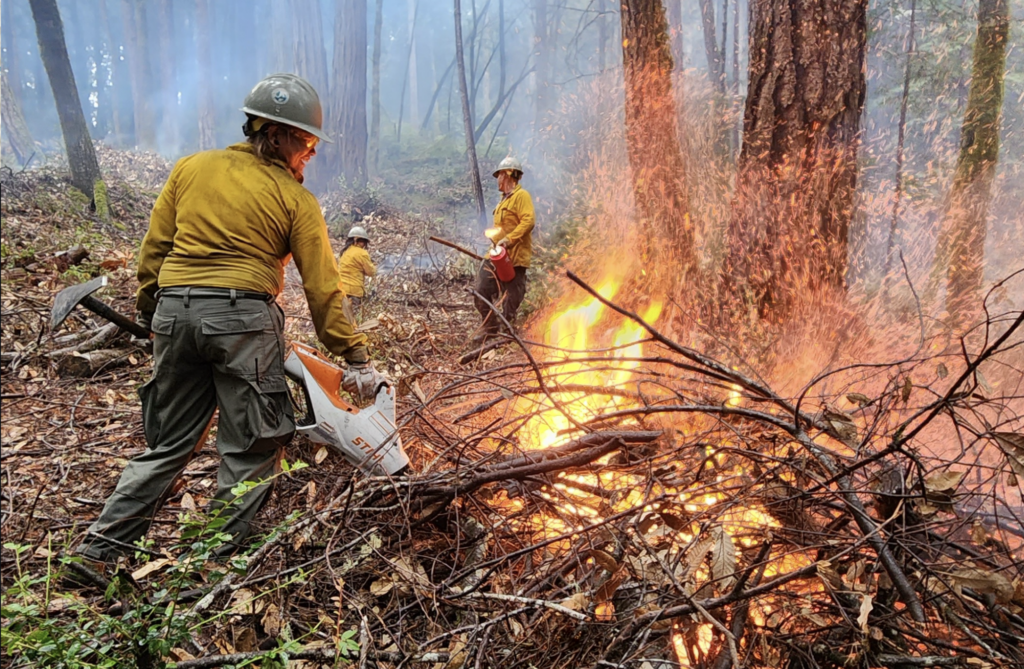
Designing a nimble crew with healthier work-life balance
An essential part of our Fire Forward program, the new Prescribed Fire Module is a ready resource available to boost the capacity for local, state, national, and international partners while honoring the well-being of the crew.
Leading the practitioner squad is Michael Garrett, hired recently with Annie Madden, who leads the apprentice squad that makes up the other half of the crew. Prior to joining Audubon Canyon Ranch, Garrett worked on wildfires across the West Coast for the US Forest Service, including hand crews from the Los Padres, Klamath, and Mendocino National Forests. He shared a frequent pain point he noticed in his suppression experience, and the need for dedicated crews that have time to develop relationships along with technical skills.
“So often we were forming group dynamics in 5 or 10 minutes, and then we’d have to go off and burn. Having a prescribed fire module who’s able to develop relationships over weeks and months creates cohesion and organization to react to complex situations,” explains Garrett. “The technical fireline skills are the foundation of what we do. But it’s the interpersonal relationships and social awareness that holds the crew together while we do complicated work.”
Sokoloski, now a state certified Burn Boss, supervises our expanded crew as module lead. A former smoke jumper and hotshot with the US Forest Service, his work assignments would frequently mean being away from family for weeks and months. His vision for the module is to balance training and doing the work into a steady and sustainable rhythm, with established trust to react more quickly and stay organized. Sokoloski explains, “The module can go do the work and nothing has to stop at home. They know how to do the work and they work well together. And with two squads, one can go to one burn and one can go to another. We now have the capacity to support multiple burns in different places on the same day.”

Meet the prescribed fire practitioners
We’re thrilled to welcome four outstanding practitioners to our new Prescribed Fire Module. Kira Rowan, Spencer Adams, and Marty Malate were promoted as prescribed fire practitioners at the end of their 2023 apprenticeship, offering a pathway to progress locally in their careers while mentoring the new class of apprentices on the crew. With a year of boots on the ground together, the trio had already worked together in a wide range of experiences and were eager to continue into the next step forward in the module. Joining them is Karyn Smoot, formerly a volunteer in the Good Fire Alliance who frequently participated in burns with Fire Forward.
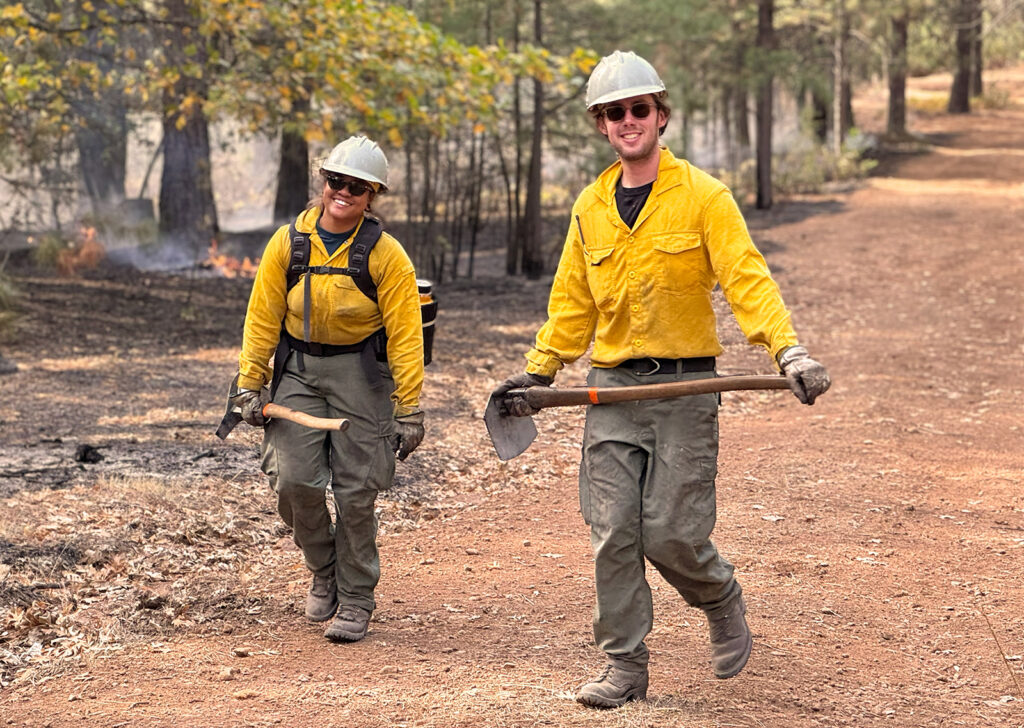
Kira Rowan
Kira was born and raised on the island of Kauai, Hawaii. Her passion for caring for the land came from the culture she grew up in. After finishing community college in Hawaii, she kick-started her career in natural resource management by interning and volunteering for local nonprofits in her community. With the Kokee Resource Conservation Program she was able to learn invasive species management and as a summer intern for the National Tropical Botanical Garden she learned how to collect, grow, and care for common, rare, and endangered plant species. Near the end of 2018 she moved to Sonoma County to start her adult life away from home. Kira is now working on her associate degree in natural resource management and environmental studies at the Santa Rosa Junior College. She has worked multiple jobs before working for the Laguna de Santa Rosa Foundation as a restoration field technician. Kira started her journey with fire as a Shone Farm intern with the Wildfire Resiliency Program and is excited where the fire bug will lead her.
Spencer Adams
Spencer Adams graduated from University of California, Berkeley, in 2019 with a bachelor’s degree in forestry and ecosystems management. He then worked as a seasonal forestry technician at Blodgett Research Forest, a UC-owned forest in the Sierra Nevada, where much of the research focused on prescribed fire and fuel reduction treatments. The following year, Spencer worked as a utility forester in the Bay Area and became an International Society of Arboriculture Certified Arborist. Wanting to shift more toward the world of fire, Spencer joined the U.S. Forest Service as a wildland firefighter for the 2022 season on the Cabin Lake Wildland Fire Module, based out of Deschutes National Forest in Bend, Oregon. Over the season, he gained valuable suppression experience while also training to become a fire effects monitor during prescribed burns.
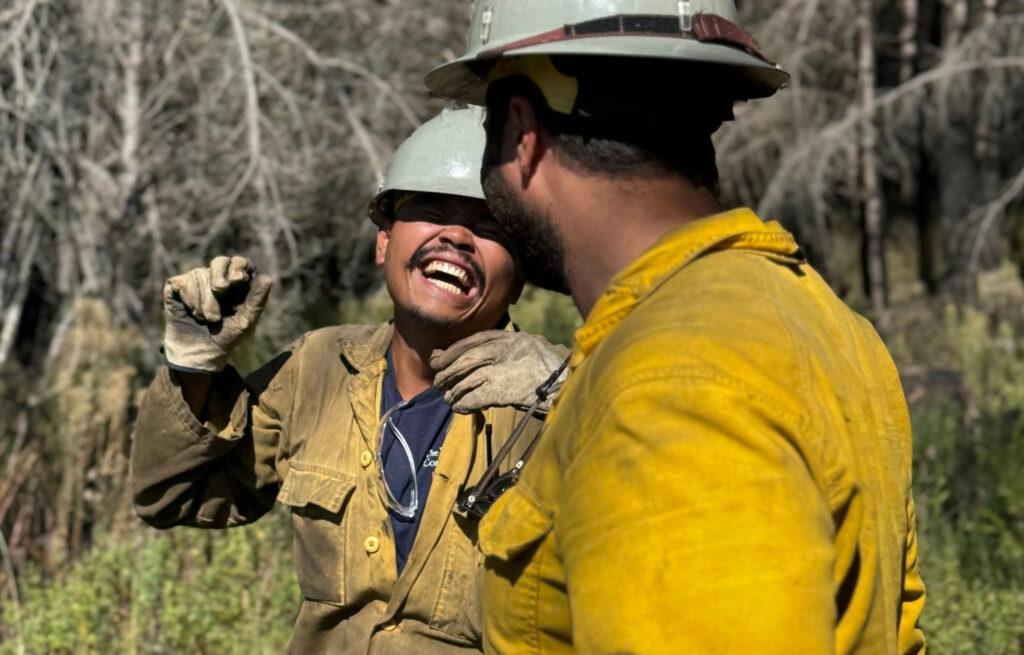
Marty Malate
Marty is having the best time getting to know the natural world — one he was unconscious of growing up in Manila, Philippines. Since moving to the States in 2014, then to Washington state where he finished his bachelor’s degree in forest ecology at the Evergreen State College, it’s been an explosion of curiosity, excitement, sense of purpose, and fulfillment working with the ever dynamic and primal element that is fire. He started with Americorps stints working as a fire-effects monitor with the North Cascades National Park and as a land steward for The Nature Conservancy around Arizona. From 2020-22, he split his time monitoring fire effects in California and on a prescribed fire crew burning long-leaf pine forests in North Carolina — giving him a balance in perspective between the field research and operational aspects of prescribed fire. As a prescribed fire practitioner, he’s grateful for the opportunity to apply these skills and to learn novel ones, working in landscapes and communities in California that are intimately intertwined with fire.

Karyn Smoot
Prescribed Fire Practitioner Karyn Smoot, who uses they/she pronouns, was born in San Francisco and grew up appreciating the flora and fauna found in and around the city. They received their undergraduate degree in 2013 from the University of Oregon in ethnic studies, environmental studies, and Chinese language. Before working in fire, they spent nine years as a worker-owner of Rainbow Grocery Cooperative, and an organizer against displacement. Karyn started their journey with fire by attending prescribed fire training exchange (TREX) events from the Klamath River basin to the central coast of California. They gained more local fire knowledge with the Good Fire Alliance and as a forest stewardship intern with Santa Rosa Junior College’s Wildfire Resiliency Program. Most recently, they have worked as a crew member on The Nature Conservancy’s Prescribed Fire Modules on burns in Idaho, Georgia, and New Mexico. With deep family roots in California, Karyn has found purpose in understanding and stewarding the landscapes that sustained her ancestors for four generations, and California Native peoples since time immemorial. As an uninvited guest on these lands, Karyn is excited to practice stewardship in solidarity with indigenous communities who are reclaiming and restoring lands locally and around the world.
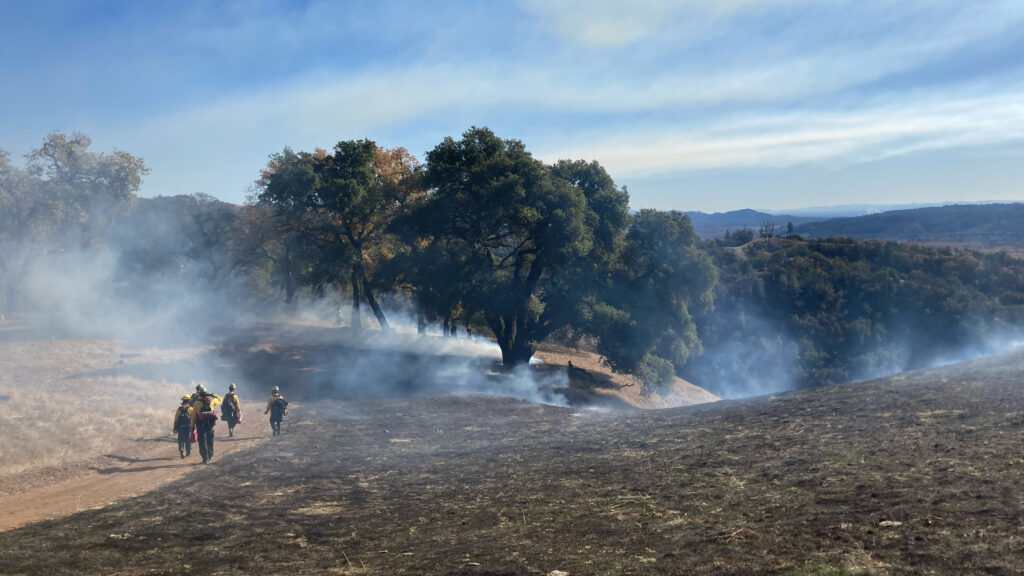
Support our prescribed fire workforce
Support the unfolding journey of our growing prescribed fire workforce by becoming a member.
